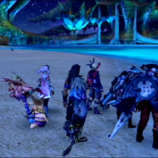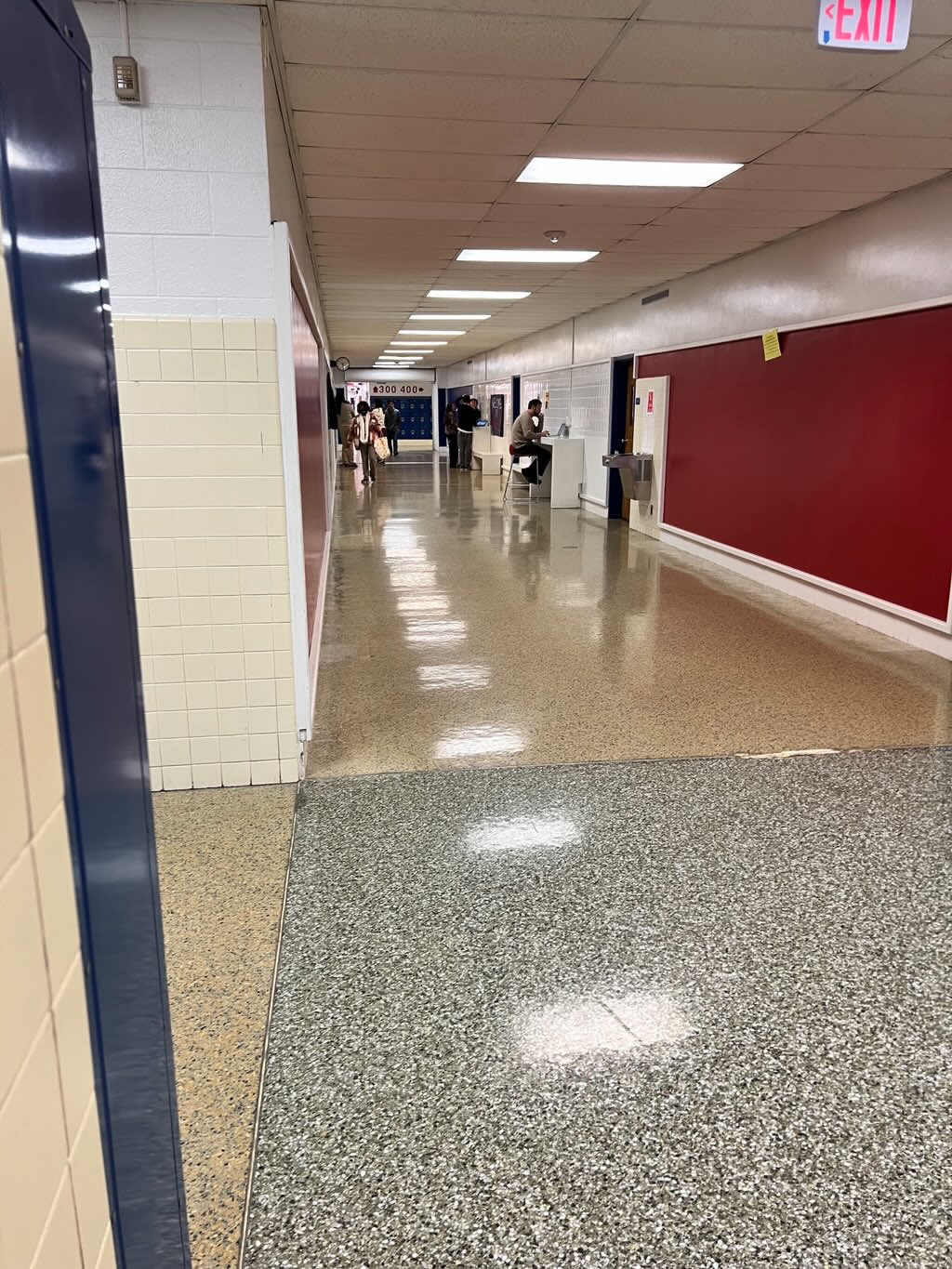Xenoblade Chronicles Craze

This screencap from the game shows the various characters and interesting lighting effects that the game has to offer.
March 3, 2015
Xenoblade Chronicles is a game developed in Japan by Monolith Soft made for the Nintendo Wii. It was written by Tetsuya Takahashi, Yuichiro Takeda, and Yurie Hattori. The game was originally known as Monado: Beginning of the World, but the name was changed to honor Takahashi since he created all the other games in the Xeno series. It didn’t come out in North America until April 6, 2012. It actually almost didn’t come out in North America at all due to Nintendo of America refusing to let it be shown at the Electronic Entertainment Expo in 2011. Nintendo didn’t think that the game would sell very well here, and it might not have if it hadn’t been for Operation Rainfall. Operation Rainfall was a campaign to get NOA to allow Xenoblade Chronicles, The Last Story, and Pandora’s Tower to be localized in North America. The game’s successor, Xenoblade Chronicles X (or Cross), is coming out on April 29, 2015 in Japan.
The story begins with two large titans known as the Bionis and the Mechonis fighting one another to the death. The colonies and villages the player explores are built on their corpses. Despite the titans’ fight being over, the fighting of their residents has not ceased. The Mechons, from the Mechonis, are machines that are set out to kill the species living on the Bionis…and the Bionis itself.
Xenoblade Chronicles has possibly the most imaginative world I have ever seen in a video game. It is also, as Vandal Online* put it, “a huge world that makes the most of the Wii, with hundreds of missions that provide tons of hours of play.” The concept of having a number of species build entire villages on the bodies of two titans (the Bionis and the Mechonis) is something that I could have never come up with. Not to mention the fact that there is an entire city floating above a sea in the sky (yes, a sea that is in mid-air). The species themselves have quite unique designs and names, as well. The enemies are possibly the most unique. Orluga is just one of the amusing enemy names that come to mind.
On the Bionis, you have Homs, which resemble humans. They aren’t really anything you haven’t seen before in terms of design, but they still have interesting names. Shulk and Dunban are previously mentioned examples of this. Next are the High Entia, which resemble elves that have wings coming out of the back of their heads. There is a third species, as well, and they are much more interesting than those two. They are called the Nopon. They somewhat resemble, as the character Reyn would say, fur balls. The overall design of the Nopon is where I feel a lot of this game’s originality comes into play. I also appreciate the fact that while the Nopon look more like animals, they aren’t treated as such.
Another thing to be praised is the fact that all of the species’ dialects vary a bit. For instance, the High Entia sound more posh. Nintendo gave North America the European version, so we got the European voice actors and Traditional English spelling of words. They didn’t have time to make a separate version for North America since, as I said before, we almost didn’t get the game. I don’t have any complaints about the voice acting, however. I believe it suits the atmosphere of the game. Besides, it would sound strange now if we were to hear Americans voice these characters.
One of this game’s main strengths is its character interactions. The characters were written pretty decently, and their interactions were written twice as well. Reyn’s interaction with Sharla and Riki had me laughing a lot longer than I probably should have. An example of this would be Reyn’s battle quote “Like they say, when the going get going, the tough get tough!” and Riki’s response “Haha! Even Riki know that not right!” Something to note is that Riki, being a Nopon, speaks in fairly broken English. The Nopon also speak in third person, which I found a bit interesting.
While the music and scenery are beautiful, it’s the way they work together that truly blew me away. The music makes everything so much more atmospheric. When the character is doing so much walking between destinations due to the size of the Bionis, it really counts. Not only does it make things seem more adventurous and fun while you’re on the move, but it makes your destination seem all the more worthwhile.
A feature of this game that makes it much easier to play is Skip Travelling. The player selects a location on the map (granted they’ve have discovered the area) and it takes them straight there. When it comes to “discovering” areas, things can get a bit annoying. There are times you may be a step or two away from both missing out on experience points and gaining a Skip Travel point. This really gets tedious when it comes to side-quests. Side-quests will either ask the characters to kill monsters for the items said monsters drop, or just kill monsters in general. If the player missed discovering the areas those monsters are in, they’ll have some walking cut out for them.
A major complaint with this game is the AI (Artificial Intelligence) for a few of the characters. If a certain character has an “art”, or attack, that requires another art to be used before it in order to work…well, you have very slim chances of the AI getting it right. Melia’s AI is the best example of this. One of her arts, Starlight Kick, has a secondary effect (Topple) that requires you to use Spear Break first. Topple is a condition that flips the enemy onto its back for a couple seconds, making it vulnerable. Melia’s AI hardly ever uses Spear Break first, causing Starlight Kick to just hurt the enemy rather than both hurting and inflicting Topple. While that doesn’t seem like an issue since you’re still doing damage, Starlight Kick on its own is rather weak compared to Melia’s other arts.
All in all, I can look past the kooky AI. While it can get annoying, it isn’t tragic. It is also far from a deal breaker. There is too much to this game to get hung up over the AI. It’s almost overwhelming just how large-scale the game itself is. Its size is not a bad thing, however. It makes you respect the game more and leaves you in awe. If you are someone who wouldn’t mind playing an insanely long game to get a phenomenally written story, then I recommend Xenoblade Chronicles.
*Found on http://www.metacritic.com/game/wii/xenoblade-chronicles







